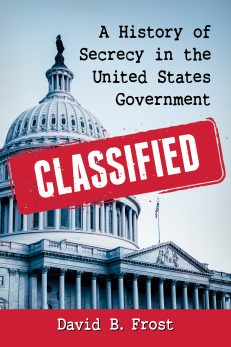Classified
A History of Secrecy in the United States Government
Original price was: $29.95.$23.99Current price is: $23.99.
In stock
About the Book
When the framers of the Constitution gathered in the summer of 1787, their deliberations were shrouded in secrecy. The Pennsylvania State House was locked, armed guards were posted and the 55 delegates of the Constitutional Convention were sworn to secrecy by presiding officer George Washington.
Ordinary Americans were allowed no role in shaping the country’s national charter. Its principle architect, James Madison, believed secrecy was necessary to prevent “a thousand of erroneous and perhaps mischievous reports,” and directed that his personal notes from the Convention not be published until after his death.
Secrecy has always played a role in American governance, from the First Continental Congress to the Manhattan Project to today’s controversial procedures for protecting national security. The author examines the balance between the ideal of openness in government and the real world need for secrecy, and the political accommodations that have been made for each.
About the Author(s)
Bibliographic Details
David B. Frost
Format: softcover (6 x 9)
Pages: 208
Bibliographic Info: notes, bibliography, index
Copyright Date: 2017
pISBN: 978-1-4766-6400-2
eISBN: 978-1-4766-2951-3
Imprint: McFarland
Table of Contents
Preface 1
1. Secrecy and the Continental Congress 3
2. The Coming of a New Constitution 20
3. The Federal Constitutional Convention 30
4. The Secrecy Issue During the Ratification Conventions 61
5. Congress Opens Up Its Doors 72
6. Secrecy and the Public Record 98
7. Black Budgets and the People’s Money 118
8. Executive Secrecy and Publicity 137
9. Executive Privilege: The President’s Power to Withhold Information 144
10. Federal Records and the People’s Right to Know 157
11. Security Classification 167
Chapter Notes 177
Bibliography 193
Index 197
Book Reviews & Awards
“Frost explores the role that secrecy has played in American government for more than 240 years”—ProtoView.






